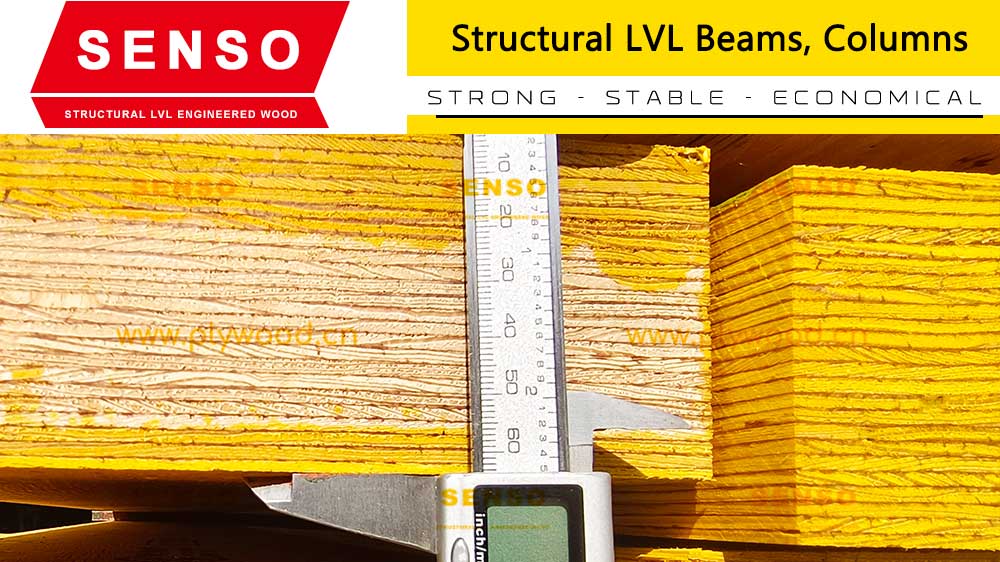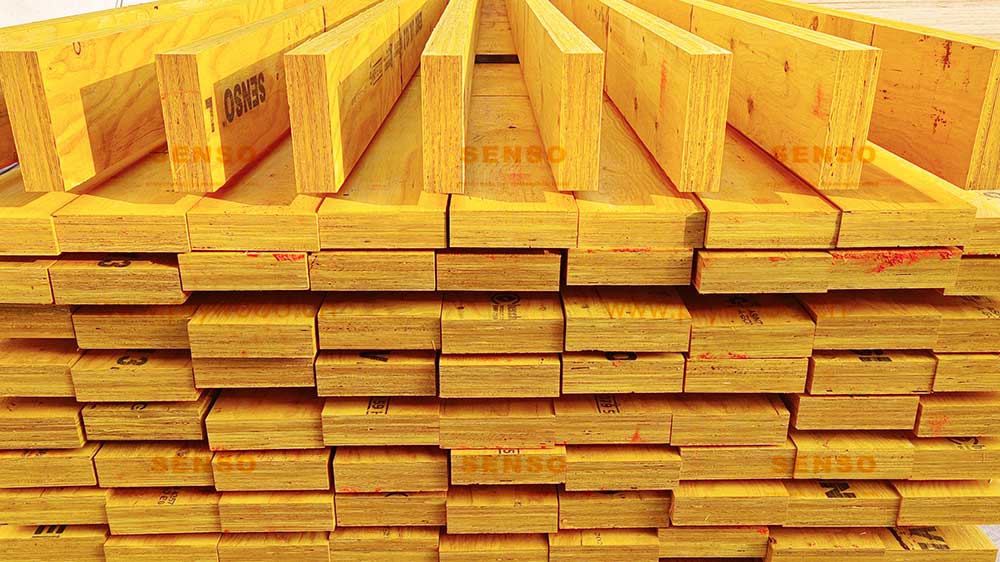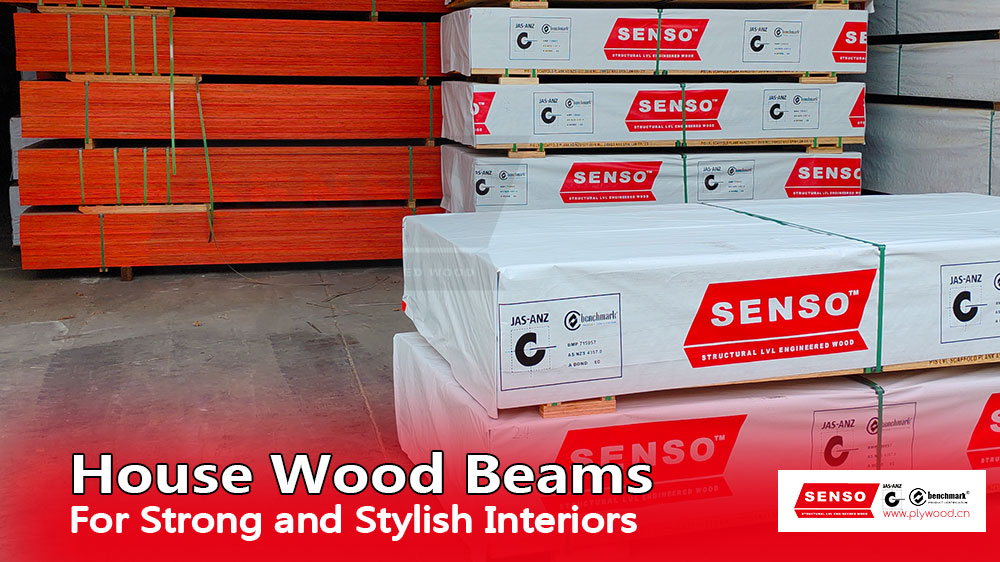What Are House Wood Beams?
House wood beams are structural or decorative wooden elements used in home construction. These beams provide essential support for ceilings, floors, and walls. They are available in various forms, including solid timber, engineered wood, and laminated wood options.
Builders use house wood beams for their strength and aesthetic appeal. Exposed beams enhance interior designs, while concealed beams ensure structural stability. Whether for rustic charm or modern elegance, structural LVL beam offer durability and design flexibility.
Benefits of Using House Wood Beams
1. House Wood Beams Exceptional Strength and Stability
House wood beam provide strong structural support for floors, ceilings, and roofs. Their engineered design allows them to bear heavy loads across wide spans. Laminated veneer lumber (LVL) beams are particularly effective in ensuring stability.
2. Versatile Design Appeal
Structural LVL beam suit various architectural styles. Homeowners can choose exposed timber beams for rustic aesthetics or concealed beams for minimalistic designs.
3. Enhanced Durability
Engineered wood beams resist warping, cracking, and shrinking. This durability ensures long-term performance, even in humid environments.
4. Improved Load Distribution
House wood beams evenly distribute weight, reducing stress on walls and foundations. This feature minimizes the risk of structural shifting.
5. House Wood Beams Sustainable Construction
Structural LVL beam made from engineered materials optimize timber use. This minimizes waste and supports eco-friendly building practices.
Types of House Wood Beams
1. Solid Timber Beams
Solid timber beams are cut from natural wood. These beams offer traditional strength and visual appeal but may be prone to warping in humid conditions.
2. Engineered Wood Beams
Engineered wood beams combine multiple wood layers with adhesives for improved strength. LVL beams and glulam beams are popular options for structural stability.
3. Decorative Wood Beams
Decorative beams enhance interior aesthetics without providing structural support. They are lightweight and designed to mimic authentic timber.
4. Reclaimed Wood Beams
Reclaimed beams provide a rustic, aged look ideal for farmhouse and vintage designs. These beams offer sustainability while adding character.
5. Faux Wood Beams
Faux wood beams are non-structural, lightweight materials designed to imitate wood’s appearance. They provide cost-effective decorative solutions.
Applications of House Wood Beams
1. Ceiling Support
House wood beams reinforce ceilings by distributing weight evenly. LVL beams and engineered wood beams are commonly used for this purpose.
2. Floor Joists
Floor systems require durable beams to maintain stability. Wood beams offer essential strength for load-bearing support.
3. Roof Structures
Structural LVL beam are critical in supporting roof trusses and rafters. Their strength helps withstand heavy snow loads, wind, and other environmental pressures.
4. Exposed Beam Designs
Exposed house wood beam create dramatic visual appeal. These beams are popular in rustic, farmhouse, and industrial-style interiors.
5. Wall Framing
Structural LVL beam enhance wall stability in open-concept spaces. They ensure secure connections between walls and ceilings.
Comparing House Wood Beams vs. Metal Beams
|
Feature |
House Wood Beams |
Metal Beams |
|
Strength |
Reliable load-bearing capacity |
Exceptional strength for large spans |
|
Aesthetic Appeal |
Natural wood texture enhances design |
Industrial appearance with limited design options |
|
Durability |
Engineered wood resists warping and cracking |
Requires rust protection for outdoor use |
|
Sustainability |
Eco-friendly materials and efficient wood use |
Energy-intensive production |
|
Installation |
Easier to cut and customize during installation |
Requires specialized tools and skills |
Choosing the Right House Wood Beams
1. Assess Structural Needs
Determine load requirements before selecting wood beams. LVL beams excel in load-bearing situations, while decorative beams are ideal for aesthetic appeal.
2. House Wood Beam Consider Design Preferences
Choose timber ceiling beams for rustic charm or engineered beams for a sleek look. Exposed house wood beam add warmth to interior spaces.
3. Evaluate Moisture Resistance
Select treated or coated structural LVL beam for damp environments. This protection ensures durability against moisture and insects.
4. Budget Considerations
Engineered wood beams provide cost-effective solutions without compromising strength. Faux wood beams offer budget-friendly decorative options.
Installation Tips for House Wood Beam
1. Planning and Preparation
- Measure the installation area to determine beam dimensions.
- Mark anchor points for securing the beams.
2. Beam Placement
- Align beams along ceiling joists for optimal support.
- Use temporary supports to hold beams in place during installation.
3. Fastening Techniques
- Secure beams with approved fasteners for stability.
- Use metal brackets or wood screws to reinforce connections.
4. Final Inspection
- Ensure beams are level and aligned correctly.
- Perform load testing to confirm structural stability.
Maintenance Tips for House Wood Beams
1. Routine Cleaning
Dust beams regularly to maintain their appearance. Use a soft brush or vacuum for delicate surfaces.
2. Moisture Protection
Apply protective finishes or sealants to exposed wood beams. This prevents moisture damage in humid spaces.
3. Crack Prevention
Inspect beams for small cracks or warping. Use wood fillers to repair minor surface imperfections.
4. Insect Protection
Treat beams with insect-resistant coatings to prevent termite damage.
Common Mistakes to Avoid
1. Using Undersized Beams
Selecting beams that are too small can compromise structural stability. Calculate load requirements to determine the correct size.
2. Skipping Moisture Treatment
Failing to protect wood beams in humid areas may lead to warping or mold growth. Use water-resistant coatings to avoid damage.
3. Incorrect Fastening Methods
Inadequate fasteners may weaken beam connections. Use manufacturer-recommended bolts and brackets for secure installation.
Why Choose House Wood Beams for Your Home?
House wooden beams combine strength, durability, and aesthetic appeal. They provide essential support in residential construction, ensuring stability and style. Builders value LVL wood beams for their reliable performance and versatile design options.
With customizable sizes and wood types available, wood beams suit various architectural styles. From contemporary designs to rustic charm, they enhance interior spaces while improving structural integrity.
House Wood Beams for Durable and Stylish Designs
House wood beams offer unmatched strength and timeless beauty. Their combination of durability, versatility, and aesthetic value makes them ideal for modern construction. Whether you’re adding exposed beams for visual appeal or strengthening ceilings and floors, structural LVL beam ensure lasting performance.
Choosing high-quality house wood beams provides stability, style, and long-term value for your home. By selecting the right beam type and ensuring proper installation, you’ll achieve a safe, stylish, and structurally sound living space.
Post time: Apr-11-2025




